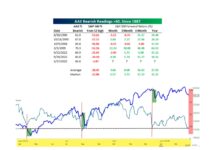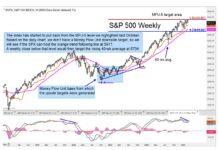 By Greg Naylor
By Greg Naylor
September was an eventful month, as the Federal Reserve and Ben Bernanke announced another round of quantitative easing, commonly referred to as QE3, or simply ‘printing more money.’ In addition, the European Central Bank announced it would begin purchasing sovereign bonds to aid Spain and Italy. Not surprisingly, stocks and bonds in Europe and the U.S. responded favorably. By the numbers:
Stocks & Bonds
After a positive August for the U.S. stock market, September saw continued strong gains in the U.S. stock market. International stocks (MSCI EAFE) also saw strong gains, with Spain and Italy taking steps in coordination with other Euro members to address their challenges. Bond prices stayed relatively flat. Inflation was up, driven almost entirely by rising gasoline prices.
| S&P 500 Total Return | MSCI EAFE | BarclaysAggregateBond | Unadjusted CPI | |
| September | 2.58% | 2.60% | 0.14% | .55% |
| August | 2.25% | 2.36% | 0.07% | -.16% |
| YTD | 16.44% | 6.21% | 3.99% | 1.83% |
Commodities & Currencies
NYMEX crude fell 4.2% in September to close at $92.42 per barrel. Gasoline prices continue a historic uncoupling from oil prices. In the last few years, the U.S. has done a complete 180, and instead of importing large amounts of gasoline we now export large amounts of gasoline, especially to Latin America. This is due partly to the strengthening of Latin American currencies against the U.S. dollar over the past decade, as well as shrinking gas usage in the U.S. contrasted with growing gas usage in Latin America. As a result, the price of gas continues to rise in the U.S. and provide inflationary pressure.
Also in September, gold and silver prices moved higher, while food prices dropped after posting remarkable gains earlier in this summer of drought. Gold and silver were up 5.1% and 10%, respectively. Corn lost 4.3%, and soybeans dropped 8.9%. The U.S. dollar index declined by 1.56% and for the year is almost flat.
Economy
Although unemployment remains stubbornly high, so far the stimulus measures from the Federal Reserve have not produced any headline inflation. Depending on which official measure you use, annual inflation is currently running, or rather crawling, between 1.5% and 1.7%. There was some good news from the Institute for Supply Management, reporting that the manufacturing PMI in September was 51.5, up from 49.6 in August. A Purchasing Managers’ Index reading below 50 indicates contraction, and above 50 indicates expansion.
The housing market continues to improve, although it is still a long way from its heyday. According to the National Association of Realtors (NAR), the annual rate of existing-home sales in August increased 7.8% from August of 2011. Short sales and foreclosures accounted for 22% of market activity, compared to 31% in August 2011.
Summary
There should be celebration in the streets: the S&P 500 is up 16.44% year-to-date! Why isn’t there more talk about this good news? The answer, unfortunately, is that many people are not benefitting. The data show that many mom-and-pop investors panicked and sold their stocks at the bottom of 2008, and have since stayed in cash, missing out on the rally. Even the “smart money” is struggling. According to eVestment, a data firm that tracks the hedge fund industry, these funds have returned just 3 percent year to date.
History shows that patient investors in quality businesses are ultimately rewarded. So far, 2012 has been such a year of reward. In the future, we will likely see more ‘unanticipated’ shocks from Italy, Spain or China. And we will likely see more ‘flash crashes’ that are not supposed to happen with the safeguards currently in place in the world’s exchanges. And we will see patient investors with diversified portfolios prevail through it all.
This material was prepared by Greg Naylor, and does not necessarily represent the views of Woodbury Financial or its affiliates. This information should not be construed as investment, tax or legal advice and may not be relied upon for the purpose of avoiding any Federal tax liability. This is not a solicitation or recommendation to purchase or sell any investment or insurance product or service, and should not be relied upon as such. The S&P500, MSCI EAFE and Barclays Aggregate Bond Index are indexes. It is not possible to invest directly in an index.
Investing involves risks and investors may incur a profit or a loss. Past performance is not an indication of future results.
Data Sources:
www.standardandpoors.com – S&P 500 information
www.msci.com – MSCI EAFE information
www.barcap.com – Barclays Aggregate Bond information
www.cmegroup.com – NYMEX crude prices
online.wsj.com/mdc/public/npage/2_3050.html?mod=mdc_curr_dtabnk&symb=DXY – U.S. Dollar performance
www.realtor.org – Housing market data
www.bea.gov – GDP numbers
www.bls.gov – CPI and unemployment numbers
www.napm.org – PMI numbers
www.coinnews.net/2012/09/29/gold-silver-surge-in-quarter-sept-sales-of-us-bullion-coins-swell/ – Gold and silver price information
markets.on.nytimes.com/research/markets/commodities/commodities.asp – Soybean price information
www.businessweek.com/news/2012-09-28/corn-surges-as-supply-unexpectedly-drops-commodities-at-close – Corn price information
About Greg Naylor: Greg is a partner and co-founder of Fiat Wealth Management, an independent financial advisory firm in Long Lake, Minnesota. He has been investing for over 7 years and enjoys sports, reading, singing, and spending time with family. Greg is a 2004 graduate of the University of Minnesota and lives in South Minneapolis with his wife Kat. Click here for more articles by Greg.
Twitter: @seeitmarket Facebook: See It Market








